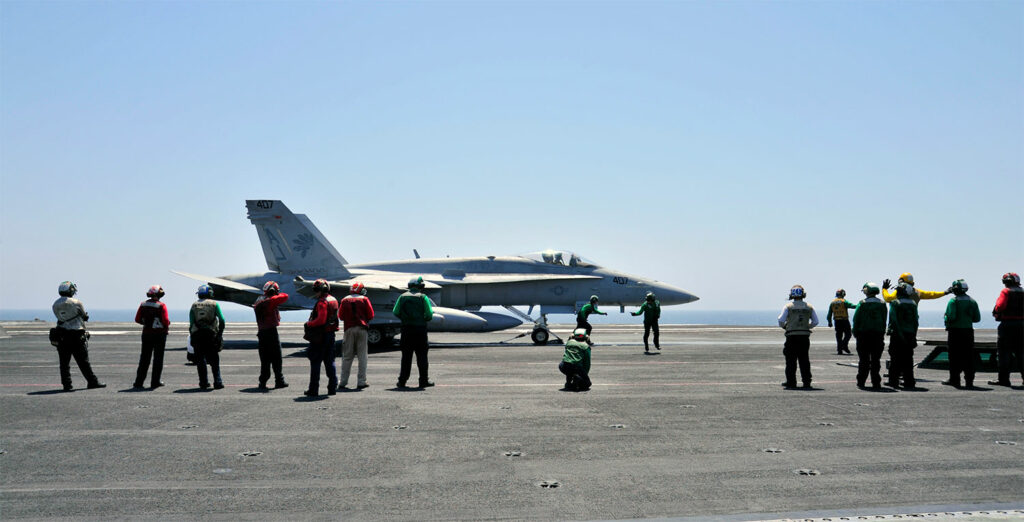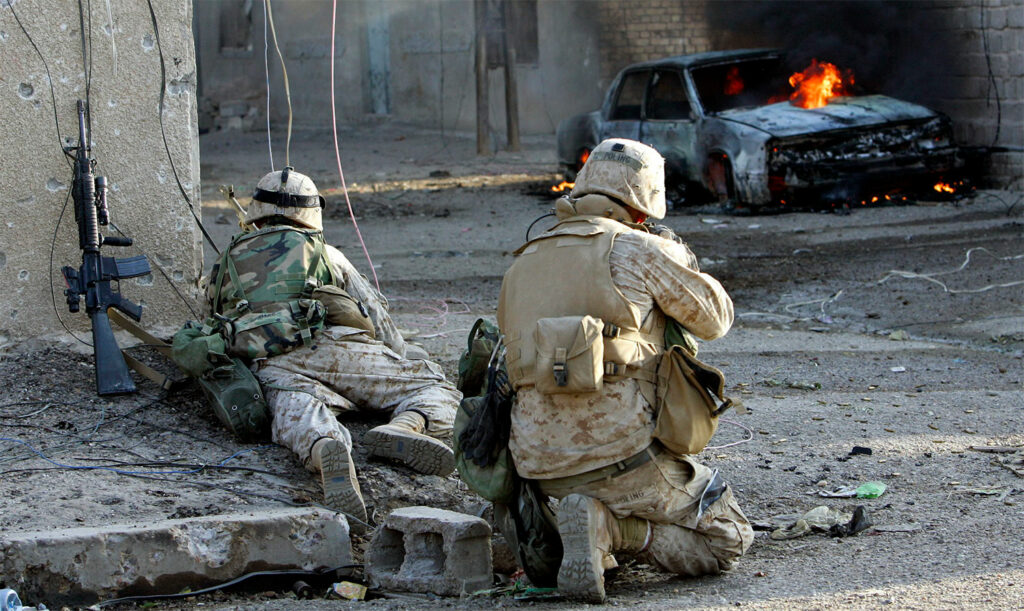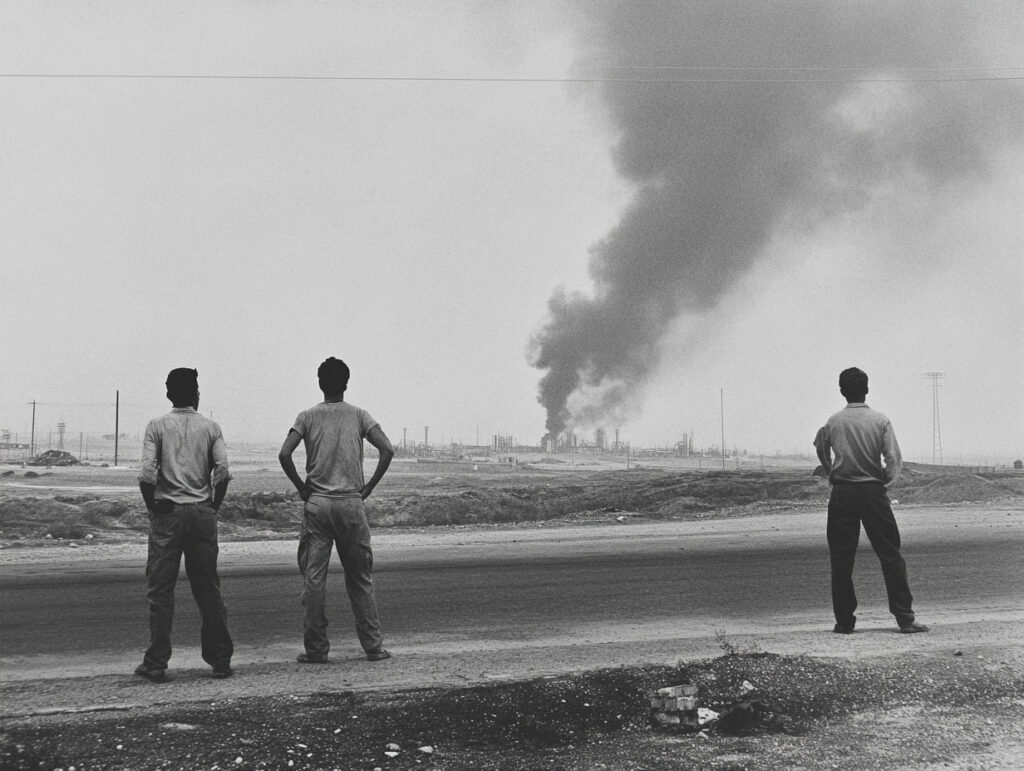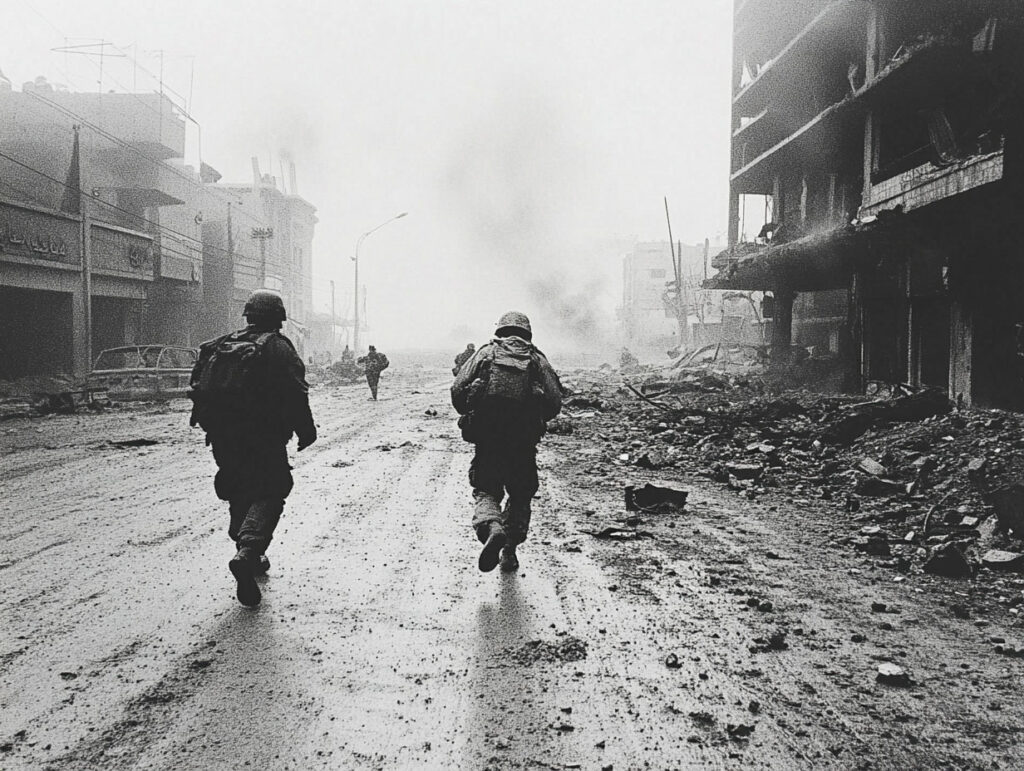An in-depth look at the Iraq War (2003–2011), examining its causes, key players, major battles, turning points, and lasting consequences.
The Iraq War began in March 2003 when a U.S.-led coalition invaded Iraq, aiming to eliminate weapons of mass destruction (WMDs) and end Saddam Hussein’s regime. Despite initial military success, no WMDs were found, leading to widespread criticism. The power vacuum post-invasion fueled a violent insurgency and sectarian conflict. Key events included the capture of Saddam Hussein in December 2003, the First and Second Battles of Fallujah, and the 2007 troop surge. The war officially ended in December 2011 with the withdrawal of U.S. troops. However, the conflict had profound consequences: over 4,400 U.S. military deaths, an estimated 100,000 to 300,000 Iraqi civilian deaths, and the rise of extremist groups like ISIS. The war’s aftermath left Iraq politically unstable and deeply divided along sectarian lines.

What Were the Reasons for the Iraq War (2003–2011)
The primary justification for the Iraq War was the belief that Saddam Hussein possessed weapons of mass destruction (WMDs) and had ties to terrorist organizations, including al-Qaeda. In his 2002 State of the Union address, President George W. Bush labeled Iraq as part of an “axis of evil,” accusing it of developing WMDs and supporting terrorism. This narrative was reinforced by Secretary of State Colin Powell’s presentation to the United Nations in February 2003, which claimed Iraq had active WMD programs.
However, subsequent investigations found no evidence of active WMD programs in Iraq. The Iraq Survey Group, tasked with finding WMDs post-invasion, concluded that Iraq had ended its WMD programs in 1991 and had no active programs at the time of the invasion.
Another rationale was the desire to promote democracy in the Middle East by overthrowing a dictatorial regime. The Bush administration argued that removing Saddam Hussein would lead to the establishment of a democratic government in Iraq, which would serve as a model for the region.
Critics argue that strategic interests, such as securing oil resources and expanding U.S. influence in the Middle East, also played a role in the decision to invade. The lack of WMDs and the subsequent instability in Iraq led to widespread criticism of the war’s justification and execution.

Who Was Involved in the Iraq War (2003–2011)
The Iraq War involved a coalition of countries led by the United States and the United Kingdom. Other countries in the coalition included Australia, Poland, Italy, Spain, and South Korea, among others. These nations contributed troops, logistical support, and resources to the invasion and subsequent occupation.
On the opposing side was the Iraqi military, loyal to President Saddam Hussein. Following the fall of Baghdad, various insurgent groups emerged, including Ba’athist loyalists, Sunni nationalists, Shia militias, and foreign jihadists. Notable among these were al-Qaeda in Iraq (AQI), led by Abu Musab al-Zarqawi, and later, ISIS.
The Iraqi civilian population was deeply affected, with many caught in the crossfire or displaced by the violence. Sectarian divisions between Sunni and Shia Muslims were exacerbated, leading to widespread communal violence.
International organizations, such as the United Nations, played roles in humanitarian aid and efforts to rebuild Iraq’s political institutions. However, the UN did not authorize the invasion, leading to debates about the war’s legality.

The Leaders of the Iraq War (2003–2011)
George W. Bush
As the 43rd President of the United States, Bush was the primary architect of the Iraq War. He advocated for the invasion based on the belief that Iraq possessed WMDs and posed a threat to global security.
Tony Blair
The Prime Minister of the United Kingdom, Blair was a staunch supporter of the U.S.-led invasion. He faced significant domestic opposition and later inquiries into the UK’s involvement.
Saddam Hussein
The President of Iraq, Hussein ruled with an iron fist from 1979 until his overthrow in 2003. He was captured in December 2003, tried, and executed in 2006 for crimes against humanity.
Donald Rumsfeld
As U.S. Secretary of Defense, Rumsfeld oversaw the planning and execution of the invasion. His strategies and decisions, including the disbanding of the Iraqi army, were widely criticized.
Paul Bremer
Appointed as the head of the Coalition Provisional Authority, Bremer was responsible for governing Iraq post-invasion. His decision to disband the Iraqi military and de-Ba’athify the government contributed to the ensuing chaos.
Nouri al-Maliki
Serving as Prime Minister from 2006 to 2014, al-Maliki’s tenure was marked by sectarian policies that alienated Sunni populations, contributing to the rise of insurgent groups.

Was There a Decisive Moment?
One of the most decisive moments in the Iraq War was the capture of Saddam Hussein on December 13, 2003, during Operation Red Dawn. His arrest marked the end of the Ba’athist regime’s leadership and was a significant symbolic victory for coalition forces.
Another pivotal event was the First Battle of Fallujah in April 2004. Following the killing of four American contractors, U.S. forces launched an offensive to retake the city from insurgents. However, the operation faced fierce resistance, leading to a temporary withdrawal and highlighting the strength and organization of the insurgency.
The Second Battle of Fallujah in November 2004 was another critical moment. This joint U.S.-Iraqi offensive successfully reclaimed the city but resulted in significant casualties and destruction, underscoring the war’s escalating brutality.
These events demonstrated that, despite initial military successes, coalition forces faced a resilient and adaptive insurgency, complicating efforts to stabilize Iraq.

Major Battles of the Iraq War (2003–2011)
Battle of Baghdad (March–April 2003)
The initial invasion culminated in the Battle of Baghdad, where U.S. forces swiftly captured the capital. The fall of Baghdad signaled the collapse of Saddam Hussein’s regime.
Battle of Basra (March–April 2003)
British forces led the assault on Basra, Iraq’s second-largest city. The battle involved intense urban combat and was crucial for securing southern Iraq.
First Battle of Fallujah (April 2004)
In response to the killing of American contractors, U.S. Marines launched an offensive to retake Fallujah. Facing strong resistance, the operation was halted, and control was handed over to local forces, which failed to maintain order.
Second Battle of Fallujah (November–December 2004)
A joint U.S.-Iraqi operation successfully recaptured Fallujah from insurgents. The battle was one of the bloodiest of the war, resulting in significant casualties and widespread destruction.
Battle of Najaf (August 2004)
U.S. and Iraqi forces clashed with the Mahdi Army, a Shia militia led by Muqtada al-Sadr. The battle ended with a ceasefire brokered by Grand Ayatollah Ali al-Sistani.
Battle of Tal Afar (September 2005)
U.S. and Iraqi forces launched an offensive to clear insurgents from Tal Afar, a city near the Syrian border. The operation was considered a model for counterinsurgency efforts.
Battle of Ramadi (2006–2007)
Ramadi, the capital of Anbar province, was a stronghold for insurgents. U.S. forces, along with Sunni tribal fighters, engaged in prolonged combat to reclaim the city, eventually succeeding in 2007.
Battle of Basra (March–April 2008)
Iraqi security forces launched an operation to wrest control of Basra from Shia militias. The battle marked a significant test for the Iraqi army’s capabilities and was supported by U.S air support.** The operation eventually succeeded, helping the Iraqi government assert more control in the south.
Battle of Sadr City (March–May 2008)
Sadr City, a stronghold of the Mahdi Army, saw heavy fighting as Iraqi and U.S. forces attempted to dismantle militia control. The battle ended with a ceasefire and a significant reduction of militia influence in Baghdad.
These battles demonstrate how the war evolved from a conventional military campaign to a complex conflict involving urban warfare, asymmetric insurgent tactics, and sectarian violence. Each engagement brought high costs in civilian casualties, infrastructure damage, and military resources, complicating efforts to stabilize the country.

Was There a Turning Point?
A major turning point came in 2007 with the implementation of the U.S. troop surge. Spearheaded by President George W. Bush and General David Petraeus, the strategy increased U.S. forces in Iraq by over 30,000 troops, reaching more than 168,000 at the peak. The goal was to secure Baghdad and Anbar Province, reduce violence, and create space for political progress.
The surge was combined with a new counterinsurgency strategy, focusing on protecting the civilian population rather than just targeting insurgents. Key to this effort was the “Sons of Iraq” program, where the U.S. military partnered with Sunni tribal fighters to combat extremist groups like al-Qaeda in Iraq. At its height, more than 100,000 Sunnis joined the program, significantly reducing violence in key regions.
In tandem, U.S. forces worked closely with newly trained Iraqi security forces, who began to take a larger role in operations. This marked a shift from direct U.S. control to a gradual transition of security responsibilities to Iraqi authorities.
By mid-2008, levels of violence had dropped significantly. Civilian casualties decreased, and roadside bombings and insurgent attacks declined. Cities like Baghdad and Ramadi, once major conflict zones, became more secure.
However, political reconciliation among Sunni, Shia, and Kurdish factions did not match the military gains. Sectarian tensions remained unresolved, and the central government under Nouri al-Maliki struggled to maintain inclusive governance.
The 2007 surge marked a significant shift in military dynamics, leading to a reduction in violence and improved security. However, it did not fully stabilize the political landscape, leaving Iraq vulnerable to future instability.

Consequences of the Iraq War (2003–2011)
The Iraq War had wide-ranging consequences for Iraq, the United States, and the broader region.
For Iraq, the war led to immense human and material losses. Estimates suggest over 100,000 to 300,000 civilians were killed, with many more injured or displaced. Infrastructure was heavily damaged, including water systems, electricity grids, and hospitals. By 2007, more than 2 million Iraqis had fled the country, and another 1.6 million were internally displaced.
Sectarian violence between Sunni and Shia militias intensified after the collapse of Saddam Hussein’s regime. The power vacuum left by the disbanding of the Iraqi military and Ba’ath Party administration led to widespread instability. This created an environment where extremist groups like al-Qaeda in Iraq, and later ISIS, could gain a foothold.
The United States suffered over 4,400 military fatalities and over 30,000 wounded. Financially, the war cost the U.S. government an estimated \$1.9 trillion, including long-term care for veterans. Public opinion shifted significantly during the war, with growing criticism over the failure to find WMDs and the prolonged occupation.
On the regional level, the war altered the balance of power. With Saddam gone, Iran expanded its influence in Iraq, particularly among Shia political parties and militias. This led to new tensions in the Sunni-majority Gulf states, many of whom viewed Iran’s rise with concern.
Politically, the war damaged the credibility of Western intelligence services and strained relations among U.S. allies, particularly those who opposed the invasion. The war also shaped future military doctrine, emphasizing the limits of conventional force in asymmetric and post-conflict environments.
By the time U.S. forces withdrew in December 2011, Iraq remained politically fragile, and security was not fully restored. The conditions that led to the emergence of ISIS in 2014 can be traced back to the sectarian policies, power struggles, and security gaps that emerged during and after the war.
While Saddam Hussein’s regime was dismantled, the long-term cost of the Iraq War—in lives, resources, and regional stability—continues to influence the Middle East and international policy.
Back to the Wars section